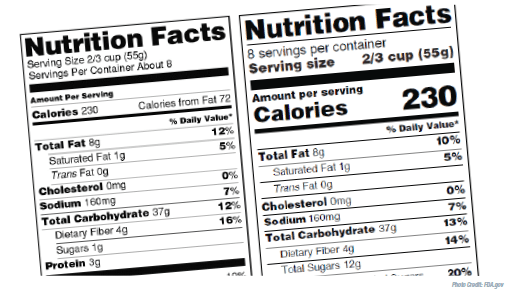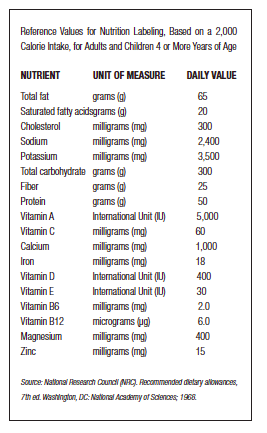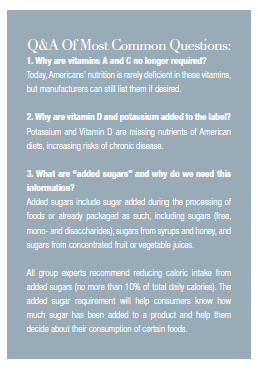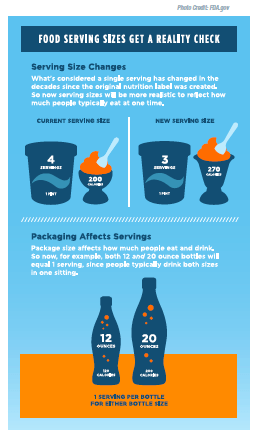
The Nutrition Facts label was introduced more than twenty years ago to help consumers make informed decisions with their food choices and health practices. But based on recent dietary recommendations from expert groups, new nutrition and public health research, as well as input from the public, the iconic label had to undergo some important changes to remain pertinent with today’s eating habits. In May of 2016, the U.S. Food & Drug Administration took a major step in that direction by finalizing a new and improved Nutrition Fact label that is required to be implemented on food products nationwide by July 2018 (July 2019 for manufacturers with less than $10 million of annual food sales).
Changes on the Nutrition Facts label include modifying the list of required nutrients that must be declared on the label, updating serving size requirements, and providing a refreshed design in order to help consumers have access to more recent and accurate nutrition information.
A Refreshed Look
The most visible change on the label is definitely the prominence of “calories” displayed in a bigger, bolder font. Additionally, one may notice a stronger emphasis given to “servings per container,” and “serving size.” The number of servings per package is also more prominent. Since nutrition labels were last published in 1993, consumers have changed what they eat and how much they eat and drink. Serving size can be very important because the accuracy of everything on the label depends on the serving size. However, keep in mind that anything can appear low-calorie, low-sugar, and low-salt if the serving size is small enough.
Subsequently, package size really affects what people eat. For instance, package sizes holding between one and two servings will require a label that reports 1 serving per package since this is what people actually consume at a time. When it comes to larger packaging, manufacturers will be showing a dual column indicating calories and nutrients on both “per serving” and “per package.” Calories from fats have been removed while most fat information such as “Saturated Fats”, “Trans Fat,” and “Total Fats” are remaining. Research shows that the type of fat(s) is more important than the total amount.
Furthermore, the footnote on the nutrition label is also changing to explain what “percent of Daily Value” means to read as follows: *The % Daily Value tells you how much a nutrient in a serving of food contributes to a daily diet. 2,000 calories a day is used for general nutrition advice.
Added Sugars on the Radar
Most likely, one of the most important nutrition label updates for consumers will be the inclusion of “Added Sugar” amounts. Scientific data shows that it is hard to meet nutrient needs while staying within calorie limits if one consumes more than 10% of their total daily calories from added sugar. But until now, there was no way of telling how much of the sugar was a natural part of the main ingredient and how much was introduced via processing.
Nutrients and Daily Values
Manufacturers now have to declare the actual amount on top of the percent daily value of vitamin D, sodium, calcium, iron and potassium on nutrition labels. Recent scientific findings show that Vitamin D is important for healthy bones, especially among women and the elderly. And potassium helps to lower blood pressure and prevent hypertension. Vitamins A and C, however, become optional since they are no longer a deficiency in the average American’s diet.
Making these changes happen is no small accomplishment. Over the years, consumers and health advocates have requested more information that is relevant and up-to-date. On the other hand, manufacturers have resisted changing the labels, saying alterations would mislead or confuse people. Claudine Kavanaugh, a health scientist at the Food & Drug Administration eloquently stated the overall importance of the information on the Nutrition Facts label with this precise analysis, when she emphasized that the primary goal of updating the Nutrition Facts label is not to tell consumers what they need to eat, but to expand and highlight the information they most need in order to make their own choices.


